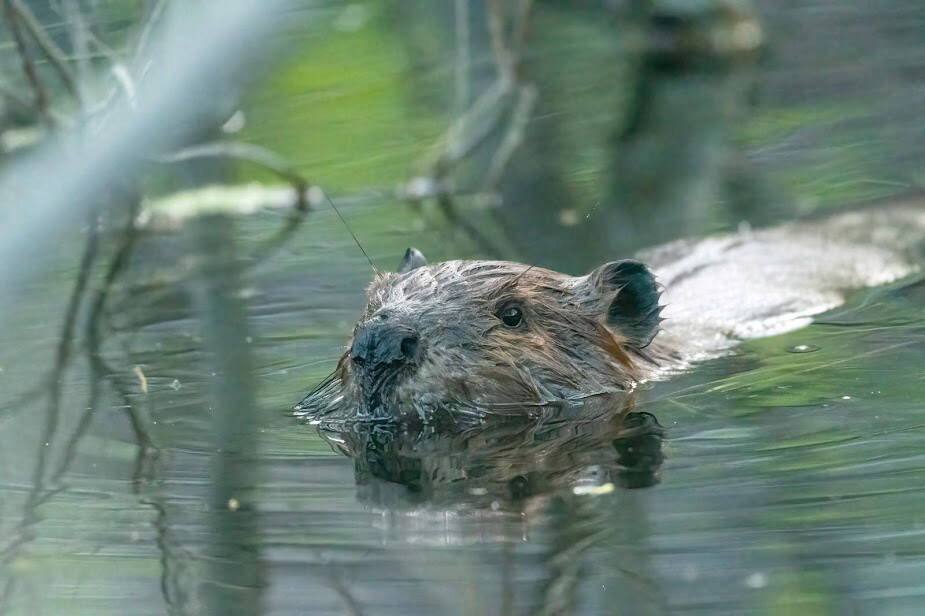Do you ever stare at a map and wonder what that seemingly amazing place looks like in real life? Staring at the contours and colors of the map, you imagine a lily pad-covered pond with a steep-sided canyon coming down from yonder.
A cool creek bubbles down to the lake, bringing water and nutrients. These images in your head are the intersection of your previous experiences with these little squiggles on the map.
As a wildlife biologist at the Kenai National Wildlife Refuge, I do what many biologists do in the winter — crunch data and write reports.
I was recently pouring through decades of beaver harvest data, trying to map where people had harvested beaver on the refuge and where they had not. This historical data is one piece of a complex puzzle in predicting current and future distribution on the landscape.
As a biologist, I feel that one of our strongest traits is pattern recognition, which was in full force as I input years of harvest data. With every name, I could visualize times I had been to almost every spot.
Even when the harvest report had the wrong name or spelling, I remembered doing a bird or vegetation survey nearby. The patterns continued year after year until I came to a name I had never noticed, Ootka Lake.
What a cool name, and why do I not know where it is? I started old school and scanned my paper maps to no avail. Next, I used my trusty electronic device and found Ootka Lake in the Beaver Creek Drainage near Akula Lake.
I had to know more about it.
I reached out to my local friend and anthropologist, Michael Bernard, who studies and shares places described and passed down by the Dena’ina.
I was surprised to learn that the lake had a previous name, Q’alts’ih Bena, which roughly translates to Cavity Lake. It is possible the origin of Ootka was Russian or that in 1963 someone had a dog named Ootka, so they went with that.
Who knows? Regardless, I now know that the lake was already named long before its current designation.
As I looked at the map and traced the water back through the drainage, I also realized there was very little geological or topographical reason for a lake in the middle of these vast wetland-stream complexes.
There may or may not be beavers there now, but it seems apparent as I backtracked up “Beaver” Creek that these lakes were at one time formed by some of nature’s most energetic engineers.
At some point, I will have to find my way to the downstream side of Q’alts’ih Bena and see if there is an active beaver dam. Or is the history of that well-constructed dam buried under the lakeshore sediments and leaf detritus?
The picture in my mind of beavers dragging birch limbs down to the water’s edge may not be present, but somewhere buried in that lakeshore is a history of how a small creek was temporarily blocked, filling the valley with water, and then continued to flow down to the Kenai River and how that slow meandering creek and wetland were transformed into a small lake that continues as a place today.
What a treat to know the Dena’ina had already discovered the history of this place and named it long before the timeline of the beaver harvest records in front of me.
As our climate continues to change, concerns have surfaced about warming waterways and potential impacts on salmon. Some of my colleagues have been looking at where water in nonglacial streams similar to Beaver Creek originates and what influences the water temperature throughout the season.
Since there are no glaciers affecting water quantity and temperature in this system, we can narrow inputs down to snow melt, rain, artesian upwelling and wetlands. The lakes hold water and slowly release stored water like a sponge.
In some situations, temporary flooding from a well-placed beaver dam could be the catalyst that wets the surrounding spongy wetland. It is actually feasible that throughout a warm, dry climatic period, inputs like artesian upwelling and slow-released water from wetlands might be the temperature-stabilizing influence these creeks need to remain viable for salmon and other habitat components they need.
When I see things like fire, insect outbreaks and drought can change landscapes, I am stumped at why I never put beavers in the same category. Without more study, we can only speculate, but the influences of one family of beaver could be far-reaching. The obvious storage of water in a lake is the low-hanging fruit in this story.
Time and future research will hopefully shed light on the function of beavers on our landscape previously, today and into the future. But, for now, my daydream of visiting Q’alts’ih Bena must be put on hold as there are 10 more years of data to input and five other outstanding reports to be finished before the summer field season arrives.
Todd Eskelin is a Wildlife Biologist at Kenai National Wildlife Refuge. Find more Refuge Notebook articles (1999-present)
https://www.fws.gov/kenai-refuge-notebook and follow us on Facebook http://www.facebook.com/kenainationalwildliferefuge.


